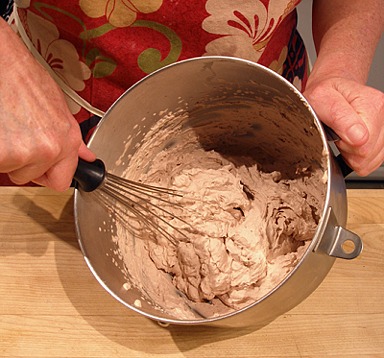Unflavored gelatin is an odorless, tasteless and colorless thickening agent, which when dissolved in cold water, and heated and then cooled, forms a jelly.
Note that certain fresh fruits contain enzymes that break down the gelatin, such as figs, pineapple, kiwi, papaya, mango, and guava. They should be cooked before being used in a gelatin-set custard to denature their enzymes. (Canned fruit does not need to be precooked because it is pasteurized at a high enough temperature to denature their enzymes.)
SARAH SAYS: Let a gelatin-set custard cool and thicken slightly before folding in any whipped cream or beaten egg whites to assure maximum volume.
This how to baking technique is used with the:
 Chocolate Whipped Cream, Optionally Stabilized Recipe
Chocolate Whipped Cream, Optionally Stabilized Recipe
 Glazed Mango Mousse Cake Recipe
Glazed Mango Mousse Cake Recipe
 Lemon Mousse Recipe
Lemon Mousse Recipe
HOW TO TIPS:
Prepare gelatin:
1. Place the dry gelatin in a small bowl. Pour cold water over it. Let soak for 5 minutes.
SARAH SAYS: This ensures that the gelatin dissolves evenly without forming grainy lumps, allowing it to “bloom,” or soften.
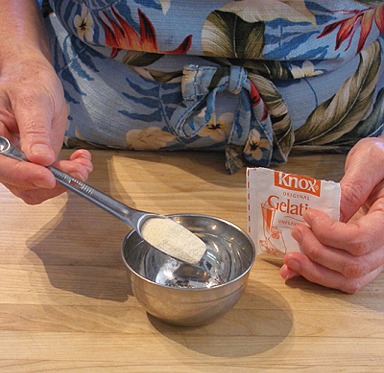
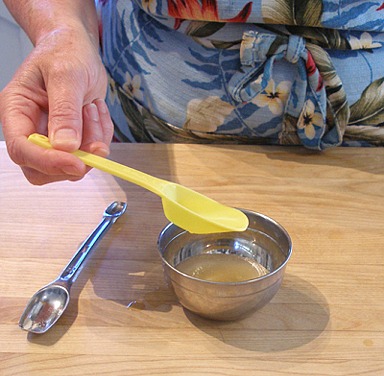
2. Dissolve by placing it in a container over a small pot of simmering water. Set aside to let cool.
NOTE: Alternatively, you may dissolve the gelatin by heating it very briefly in the microwave, under low power. Do not let it overheat.
Whip the chilled cream and add the dissolved gelatin:
1. Fit an electric mixer with the whisk attachment. Beat the cream on high speed until it is barely stiff, then stop the mixer.
2. Add in the dissolved and cooled gelatin:
Kelly CA SAYS: I find there is less tendency for the cooled gelatin to form blobs in the finished whipped cream using my method:
a. Add two tablespoon of the cream, to the melted and cooled gelatin.
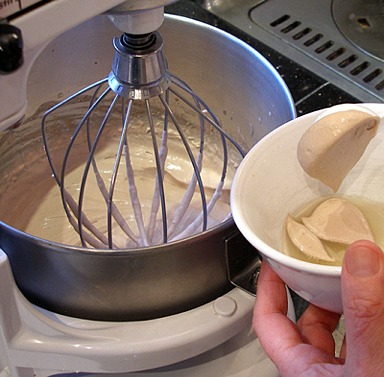
b. Stir it into the cooled gelatin.
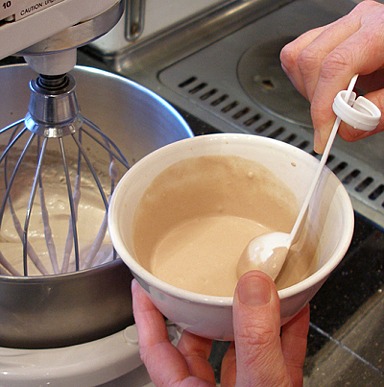
c. Return the cream / gelatin mixture back into the main mixing bowl with the rest of the semi-whipped cream.
Continue to whip the cream on high until soft peaks form.
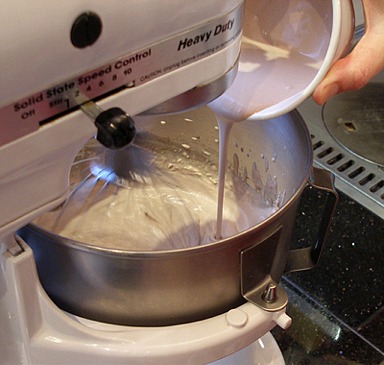
3. Finish beating with whisk to adjust consistency, if necessary.
